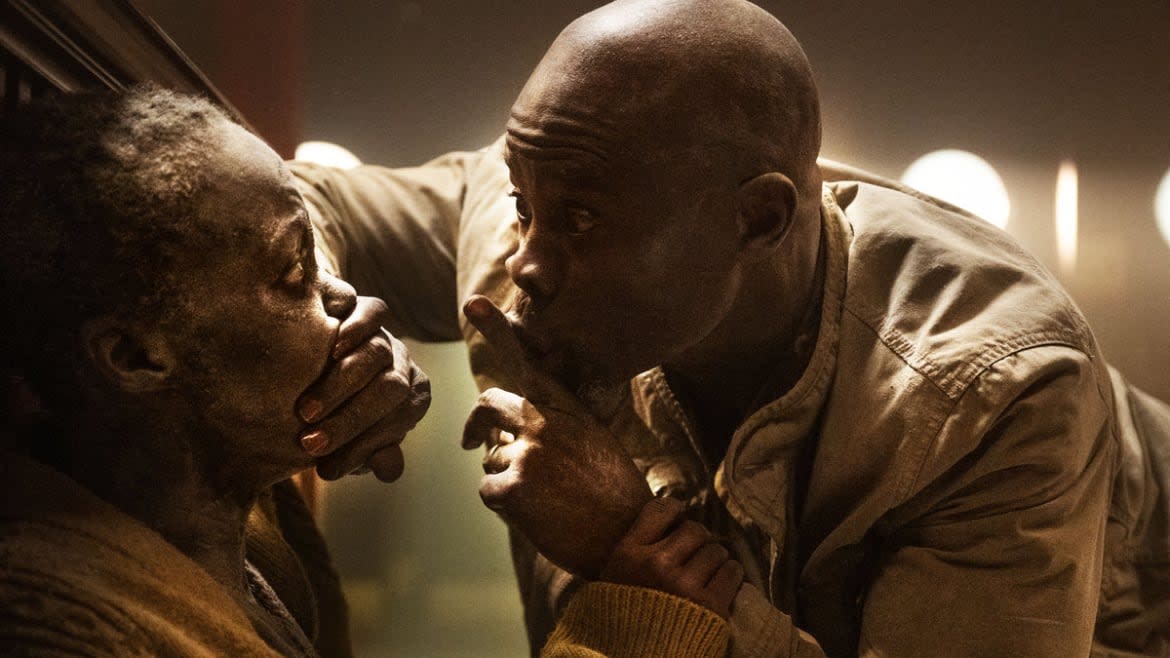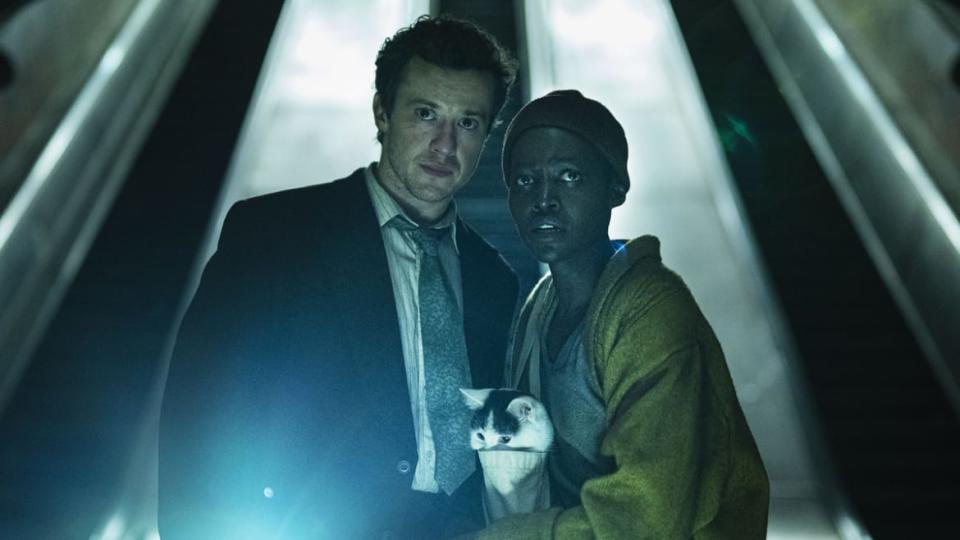Lupita Nyongo’s Breathtaking Talent Rings Loud in ‘A Quiet Play: Day One’

Technically, A Quiet Place: Day One, which hits theaters June 28, is a prequel to John Krasinski’s 2018 hit A Quiet Place and its 2020 sequel A Quiet Place Part II. Yet in reality, it’s a separate tale set in the same universe as—and, chronologically speaking, before—its predecessors, which helps it avoid some of the pitfalls normally associated with such backstory-centric affairs. A saga about an unlikely pair’s attempts to survive the sudden arrival of a race of aliens with supersonic hearing, Pig writer/director Michael Sarnoski’s film isn’t as nerve-wracking or as poignant as its franchise ancestors. Still, courtesy of an intense lead performance from Lupita Nyong’o, it packs a moderate silent-but-deadly punch.
At a New York hospice, Sam (Nyong’o) reads a poem about the shittiness of her life among the facility’s elderly patients. This mildly rankles nurse Reuben (Alex Wolff), albeit not enough to dissuade him from inviting her on an outing to Manhattan to see a show. Wearing a red knit cap and a look of wry misery, Sam reluctantly agrees to this excursion once Reuben gives in and says that they can also get NYC pizza. Boarding a school bus, Sam gazes out the window at the Big Apple as her beloved black-and-white service-animal cat sits on her lap. When they arrive, it turns out that they’re attending a marionette performance, and though Sam rolls her eyes at this surprise, she’s soon entranced by the elderly artist’s boyish puppet, whose movements—and ability to blow up a balloon that temporarily renders him airborne—prove more than a bit magical.
Sam is emotionally fragile and she has a bandage covering a wound on her side, yet the reason she’s in hospice care is never fully explicated by A Quiet Place: Day One. An air of mystery consequently hovers over the ensuing pandemonium, which explodes once Sam is told that they must skip pizza due to a burgeoning metro crisis, and things swiftly go to hell thanks to fireballs in the sky that bring with them screechy, long-limbed, auditorily enhanced extraterrestrials. Chaos erupts in grand explosions that cover everything in dust, and while Sarnoski doesn’t deliberately create 9/11 parallels, it’s difficult not to think about that fateful day as Sam tries to make her way through a blinding haze of ash and dirt, unsure of her circumstances or whereabouts, and surrounded by screams and roars.
In this bedlam, Sam is knocked out, and when she comes to, she’s back in the theater alongside Henri (Djimon Hounsou, briefly reprising his Part II role) as well as Reuben. Even at this early stage, everyone has gotten the memo that the creatures respond to the faintest of sounds and, accordingly, are sitting still. As before, however, suspense comes from the fact that staying totally silent is an impossibility, especially in a city that—as introductory text indicates—has an average volume of 90 decibels. Whether it’s Sam’s feline friend running away, broken glass scattered on the ground, or an emergency generator that growls to life after the power goes out, noise is an inevitability. So too, therefore, is the appearance of the intergalactic beasts, who move at lightning speeds, thrash their prey with claws, and chase after the smallest whisper in Earth-rattling stampedes.
Separated from her owner, Sam’s kitty has a drink at a flooded subway entrance, out of which emerges Eric (Stranger Things’ Joseph Quinn). Inspired by a meaningful look from the cat, Eric follows it back to Sam. She wants nothing to do with the frazzled stranger, who proceeds to trail her like a sad puppy (complete with hangdog eyes). Overhead helicopters announce that survivors should head to South Street Seaport to board boats because the invaders can’t swim, but Sam has other ideas—namely, to head uptown to Harlem to procure the pizza she’s been coveting from the start. Despite this madness, Eric is so shell-shocked that he decides that having company trumps logic and he opts to accompany her on her journey, during which they make a pitstop at her apartment and he learns a bit about the paternal motivations behind her quest.
A Quiet Place: Day One primarily defines character through action, and much of its focus is on Sam and Eric’s growing bond as she helps him cope with massive panic attacks that threaten to paralyze him at moments of tremendous danger, and he returns the favor by searching for her medicine and consoling her over her grief. Like Krasinski’s installments, the story is ultimately rooted in father-daughter love and devotion, although in this case, that thread feels a tad remote and, thus, less moving. Where the film really deviates from formula is with its aesthetics. While Krasinski’s visuals were bright and clean, Sarnoski’s are drab and smoky, and a few set pieces are undercut by a murkiness that renders his subjects—both human and otherwise—frustratingly indistinct, highlighted by a close-up of an alien’s ear that’s far less focused than the prior movies’ corresponding shots.

Lupita Nyong’o and Joseph Quinn
Regardless of the fact that its urban locale provides novel opportunities for mayhem, including a trek (and chase) through a flooded tunnel, A Quiet Place: Day One is seldom pulse-pounding. Nyong’o, however, is so captivating that she compensates for the anarchy’s familiarity. With a tremulousness that belies her steely determination to reach her destination and, afterwards, to get Eric and her cat to safety, the Oscar winner inhabits Sam with an emotional fullness that makes her more than just a pawn in a fearsome cat-and-mouse game. No matter the situation, Nyong’o is transfixing, most of all when she’s hinting at the secret pains and sorrows buried deep within. In a manner similar to Krasinski and Emily Blunt in the original films, she suggests a complete life without explicitly revealing it.
A Quiet Place: Day One eventually dovetails with Part II as well as delivers one key piece of new information about its marauding monsters, thereby connecting itself to—and expanding upon—its forefathers. In terms of taut, methodical tension, it may not equal those efforts, but it remains a prequel that stands on its own.
Get the Daily Beast's biggest scoops and scandals delivered right to your inbox. Sign up now.
Stay informed and gain unlimited access to the Daily Beast's unmatched reporting. Subscribe now.


